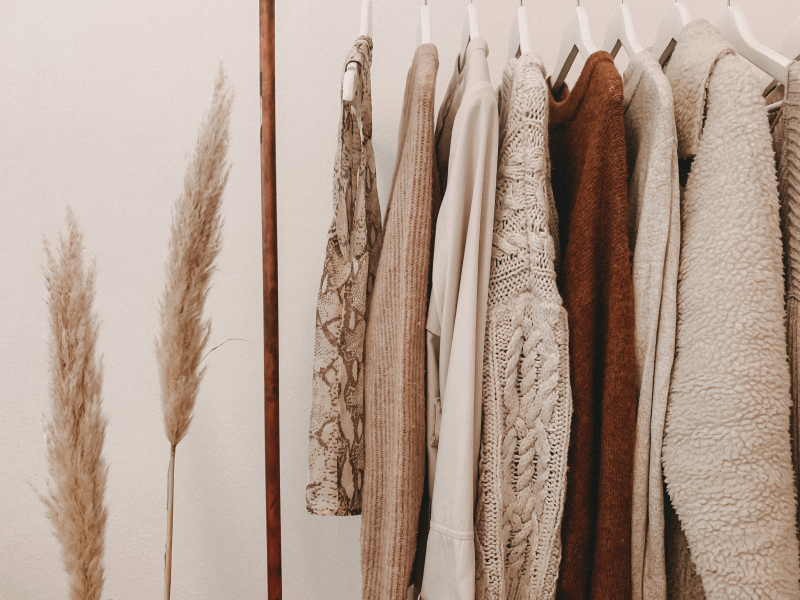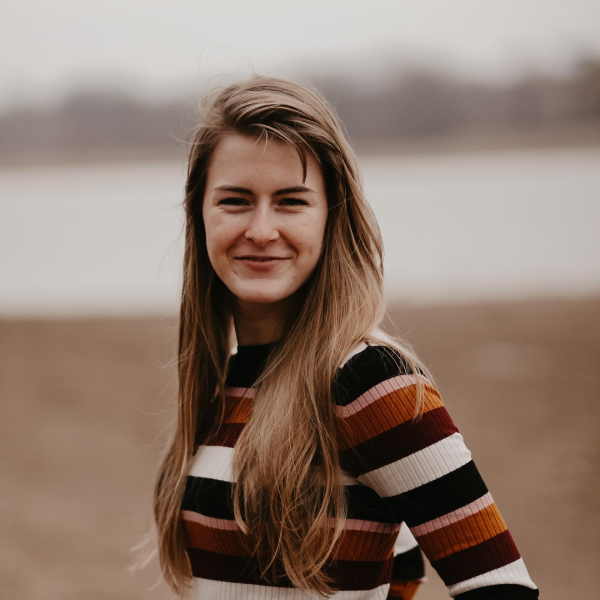How to Choose the Right Fabric for Your Sewing Projects
In this article, we'll explore the importance of material type in sewing projects and how it influences the final result. We'll delve into the properties of popular fabrics like cotton, polyester, rayon, and knits, shedding light on their unique strengths and limitations. Additionally, we'll discuss the practical aspects of choosing the right width and length of fabric for your project, along with essential considerations such as color fastness and pre-washing.

Determining the Amount of Fabric for a Project
Embarking on a fresh sewing endeavor triggers an immediate consideration: the selection of the ideal materials. The significance of material choice cannot be overstated, as it serves as the very foundation upon which your creative venture takes shape. The fabric you opt for not only dictates the aesthetic and functional aspects of your final product but also influences the overall sewing experience. It's akin to selecting the canvas for a masterpiece; the right choice lays the groundwork for an exceptional outcome.
When venturing into a new sewing project, the art of material selection takes center stage. Beyond the design and pattern, it's the fabric that breathes life into your creation. Your choice of fabric type and quantity becomes a pivotal decision that bridges your vision with reality. Every stitch, every seam, and every contour of the garment are influenced by this primary choice.
Guiding you in this endeavor, most pattern packages include a valuable resource on the back – a description of the recommended fabric types. This essential reference empowers you with insights into the fabrics that align harmoniously with your chosen pattern. Therefore, it's not just a recommendation; it's a key that unlocks the door to your design's success.
Before you embark on your fabric hunt, take a moment to delve into this treasure trove of information. By perusing this section, you equip yourself with the knowledge needed to make an informed decision. You become privy to the subtleties that can elevate your project, ensuring that the fabric you procure seamlessly aligns with your creative vision.
In the orchestration of your sewing project, remember that the fabric you choose is not merely a canvas but a living, tactile embodiment of your creative vision. From the flutter of a skirt to the embrace of a blouse, the fabric's character interweaves with the design's narrative, carrying within its threads the potential to elevate your creation into an exquisite work of art.
Material Selection by Textures, Thickness and Pliability
The choice of material at the outset of a project holds immense significance, for it wields the power to reshape and redefine a garment's form and fit. Among the spectrum of options, cotton emerges as a formidable contender, characterized by its resolute stiffness. This attribute lends itself well to the precision of cutting pattern pieces and the smooth operation of sewing machines. Yet, its propensity to confer a pronouncedly dramatic flair to flared skirts and dresses isn't always a coveted outcome. The extent of the flare exceeds that of its more fluid counterparts like polyester or rayon, which imbue garments with an elegant, flowing grace. While cotton's merits abound, the ardent demand for frequent ironing can't be overlooked—a chore that sometimes eclipses the joys of crafting. In the realm of fabrics, canvas blends and linen bear a resemblance to cotton in their sewing challenges, but they also offer a generous measure of user-friendliness.
Transitioning across time, a personal evolution unfolds, where the fusion of sophistication and comfort has become an earnest endeavor. The journey commenced with an affinity for cotton-based materials, a choice rooted in tradition and ease. But as seasons and years go by, the shift towards knits and stretchy fabrics beckons, signaling an alignment with both style and adaptability. Recognizing the mutable nature of the human form, the aspiration to create timeless pieces gains traction—an ambition that necessitates materials capable of accommodating shifting contours. Herein, the allure of knit and spandex materials lies, conforming to the wearer's anatomy rather than dictating their shape. The resultant effect is a silhouette devoid of exaggerated voluminousness, an aesthetic contrast to the whimsical poofiness often associated with certain fabrics.
An added allure of knit fabrics lies in their reduced demand for regular ironing, a positive step on the quest for convenience. However, it's not without its challenges. The very pliancy that makes knits comfortable can pose difficulties during the cutting phase. The material's propensity to shift and curl along its edges complicates the task of achieving seamless alignment, necessitating precision and patience.
In the spectrum of materials, polyester and rayon emerge as exemplars of fluidity, embracing the wearer in a soft, subtle embrace. These fabrics excel in bestowing an understated elegance upon garments while maintaining a semblance of structure that sets them apart from the entirely relaxed form of knits and spandex. Their non-stretch nature defines their inherent essence, although the inclusion of spandex or similar elastic fibers can bridge this distinction, ushering an element of adaptability into their folds.
Width and Amount of Material to Purchase
When you step into fabric stores, a world of possibilities unfurls before you, each bolt of fabric bears a label that serves as a guide to its composition and characteristics. This informative tag goes beyond the material's mere name, delving into its components and structure, granting insight into its nature. Among the most critical details conveyed is the fabric's width, a determinant that profoundly influences your sewing journey.
Traditionally, these fabric bolts come in two prevalent widths: 45 inches (115cm) or 60 inches (150cm). This disparity in width intricately interlaces with the length of fabric needed for your project. The harmonization of width and length intricately weaves the canvas upon which your creative vision will take shape. As you embark on a new project, whether it's an intricate dress, a cozy quilt, or a sleek top, the importance of material dimensions becomes resoundingly clear.
The project's blueprint, that determines the proper length and width of material needed is nestled within pattern instructions or discreetly printed on the back of a pattern envelope. This legend serves as your navigational chart. Herein, lies the true north of your sewing voyage—calculating the precise amount of fabric required. Fabrics with a wider width provide an advantage, allowing for a shorter length of material. Conversely, narrower fabrics beckon for longer lengths to accommodate the same design. It's this symbiotic dance between width and length that ensures your creative canvas perfectly aligns with your aspirations.
In the realm of crafting, prudence stands as a steadfast companion. As a safeguard against uncertainties that occasionally accompany even the most seasoned crafters, a wise practice emerges—to secure an additional 0.5 meters more fabric than your project's mentioned requirements. This modest surplus acts as a buffer against the unforeseen, a safeguard against the unexpected intricacies that can arise during the sewing process. It's a gesture that embraces an element of craftsmanship, recognizing that in the realm of creation, as in life itself, a margin for adjustment is often the key to success.
Pre-Washing Materials
Vigilance reigns paramount when venturing into the realm of color-infused fabric selections. A symphony of hues awaits, each with the power to infuse life and character into your creations. Yet, amid this palette of possibilities, caution beckons. Mindful of the chromatic interplay at hand, it's imperative to exercise discernment—especially with hues that possess an inherent propensity to bleed.
Deeper shades—fiery reds, vivid oranges, enigmatic blacks, and moody blues—often carry with them the potential to release their vivid pigment into the folds of neighboring fabrics. As the creative process unfolds, this color transfer can birth unintended effects, shifting your masterpiece from harmonious symphony to discordant disarray. Thus, a measured approach is vital; if your chosen fabric boasts a shade prone to bleeding, a preliminary washing ritual is a safeguard worth embracing. Several washes may be necessary to prevent bleeding.
The act of laundering your chosen fabric before embarking on your creative journey isn't a mere ritual—it's an insurance policy against unwelcome surprises. By subjecting the material to a preemptive wash, you stymie the potential for unwanted shrinking and warping. This practice isn't just about preserving the integrity of your current project, but it extends its protective embrace to the lifespan of the finished garment. Here, the specter of shrinkage—the silent antagonist—beckons. Fabrics, prone to transformations when exposed to water and heat, can exhibit unexpected modifications in dimensions if left unwashed before sewing. However, this concern finds resolution through the act of pre-washing. In doing so, the fabric's propensity to shrink is assuaged, preserving the fit and proportions that align with your creative vision.
In the multifaceted world of crafting, the interplay of color and care is a constant thread weaving through each stage. It's an artistry that harmonizes aesthetics with practicality, resulting in garments that not only dazzle the eye but also withstand the test of time. So, as you navigate the realm of fabric selection, remember that the hues you embrace are more than just pigment—they're the brushstrokes that contribute to the masterpiece you're crafting, imbuing it with vibrancy, resilience, and enduring allure.
Example of the Impact of Material Choice
Among the array of garments I've meticulously fashioned, one that holds a cherished place in my heart is the wonderful outcome of the McCalls 7906 button-up skirt pattern. This skirt materialized from a spark ignited by another sewist's creation on Instagram I embarked on a journey, guided by the silhouette of that skirt, with a vision to translate it into my own unique creation.
For this endeavor, I chose a faux-suede fabric—a tactile combination of stretch and thickness that elevated the design to new dimensions. The material's duality—stretchy yet thick—ensured both comfort and a structural integrity that would honor the design's aesthetics. Yet, the path to completion was not devoid of challenges. The creation of the skirt necessitated some alterations in the alignment of pleats, a strategic maneuver orchestrated to circumvent the perils of my sewing machine buckling under the pressure of overlapping layers, a testament to the intricate interplay of vision and practicality.
As the threads of creation seamlessly intertwined, the resulting skirt emerged as a testament to the convergence of artistry and resourcefulness. It lay serenely flat, an embodiment of grace amplified by the fabric's substantial weight. The slight stiffness, yet flowing nature of the material imbued the garment with a subtle volume—a visual symphony that resonated with classic elegance. Adorning myself with this creation, I found myself enveloped in the enchanting whispers of sophistication and charm, attracting several compliments that attested to the success of the artistic pursuit.
My partner's declaration that the skirt epitomized a "premium" clothing item underscored its uncanny resemblance to high-end store-bought attire. This accolade, a nod to the merger of craftsmanship and aesthetics, bore witness to the transformation of fabric into a beautiful clothing item. The garment's allure, however, extends beyond its visual appeal. Its thoughtful design, a tapestry woven from considerations of comfort and practicality, endows it with a distinctive identity. The skirt's extended length offers both solace and warmth, a shield against the cold winds of winter. Its stretchiness, a touch of innovation, allies with the presence of belt loops, ensuring that the waist adapts seamlessly to the fluctuations of weight and bloating. And in a stroke of functional elegance, the presence of pockets brings forth a touch of convenience—an amenity not often bestowed upon the world of women's fashion.
In summation, this self-crafted marvel stands as an epitome of creativity actualized—a blend of aesthetics and utility that transcends its material essence. It encapsulates the essence of the art of sewing—a convergence of vision, skill, and choice—a tangible testament to the joys of creation. This skirt, a beacon of personal expression and artistry, holds its place in my heart not merely as a clothing item but as a wearable legacy, a reminder that the fabric of our aspirations can be woven into enduring tapestries of elegance, comfort, and individuality.
